Atrial flutter occurs from a reentrant circuit around the tripcuspid valve in the right atrium. It is an organized rhythm that is generally characterized by an atrial rate around 300 bpm, and a heart rate around 150 bpm. It more commonly occurs in a counterclockwise fashion, leading to inverted flutter waves in the inferior leads (II, III, and aVF). Consider 2:1 flutter in any tachycardia with a ventricular rate of 125 to 200 bpm, most commonly close to 150 bpm.
Atrial Flutter
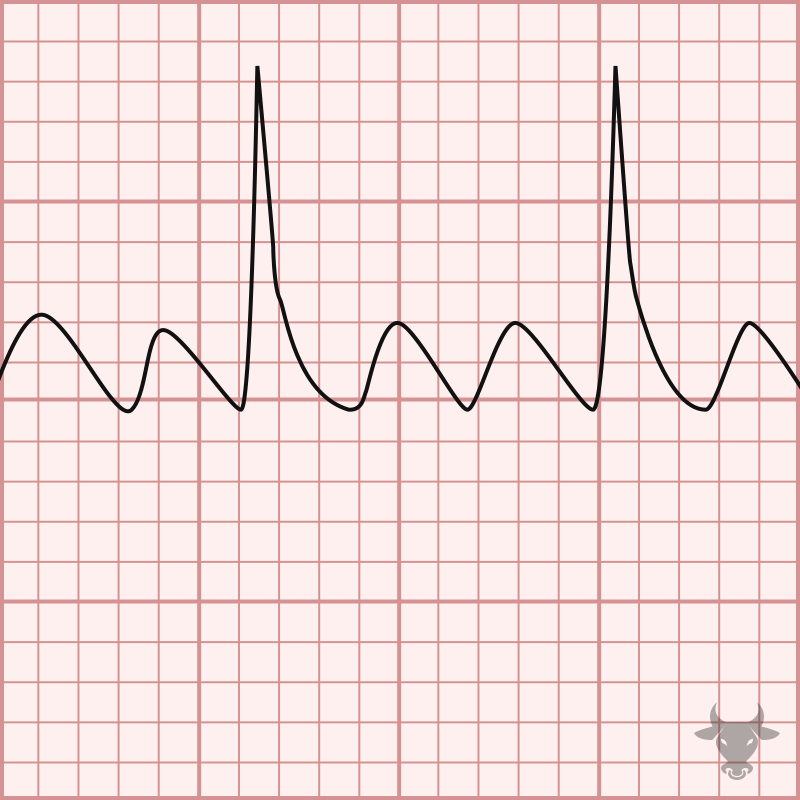
Examples
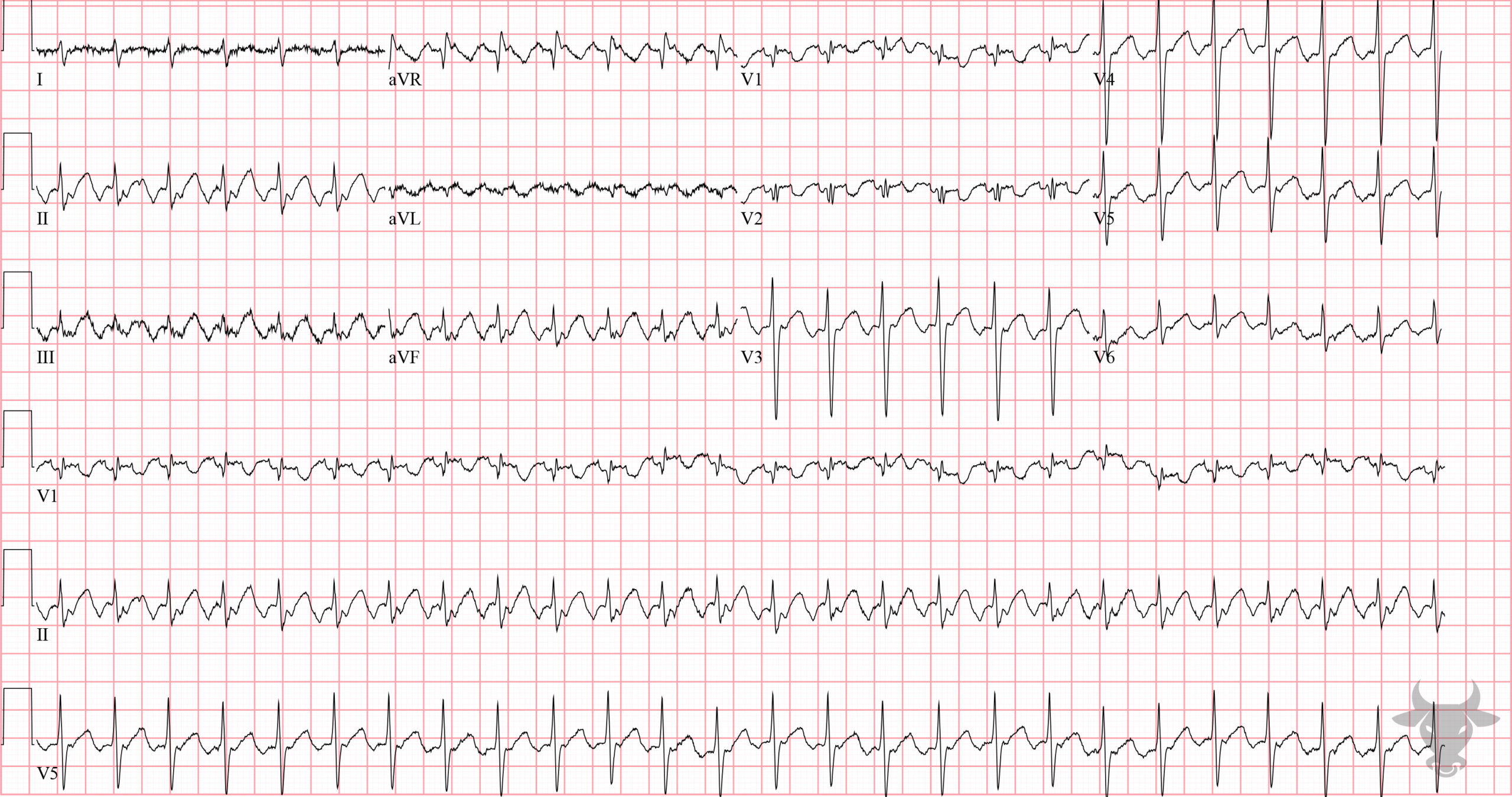
Atrial Flutter
This is atrial flutter with 2:1 conduction. Notice the sawtooth pattern in the inferior leads (II, III, and aVF), with inverted flutter waves (i.e., typical atrial flutter).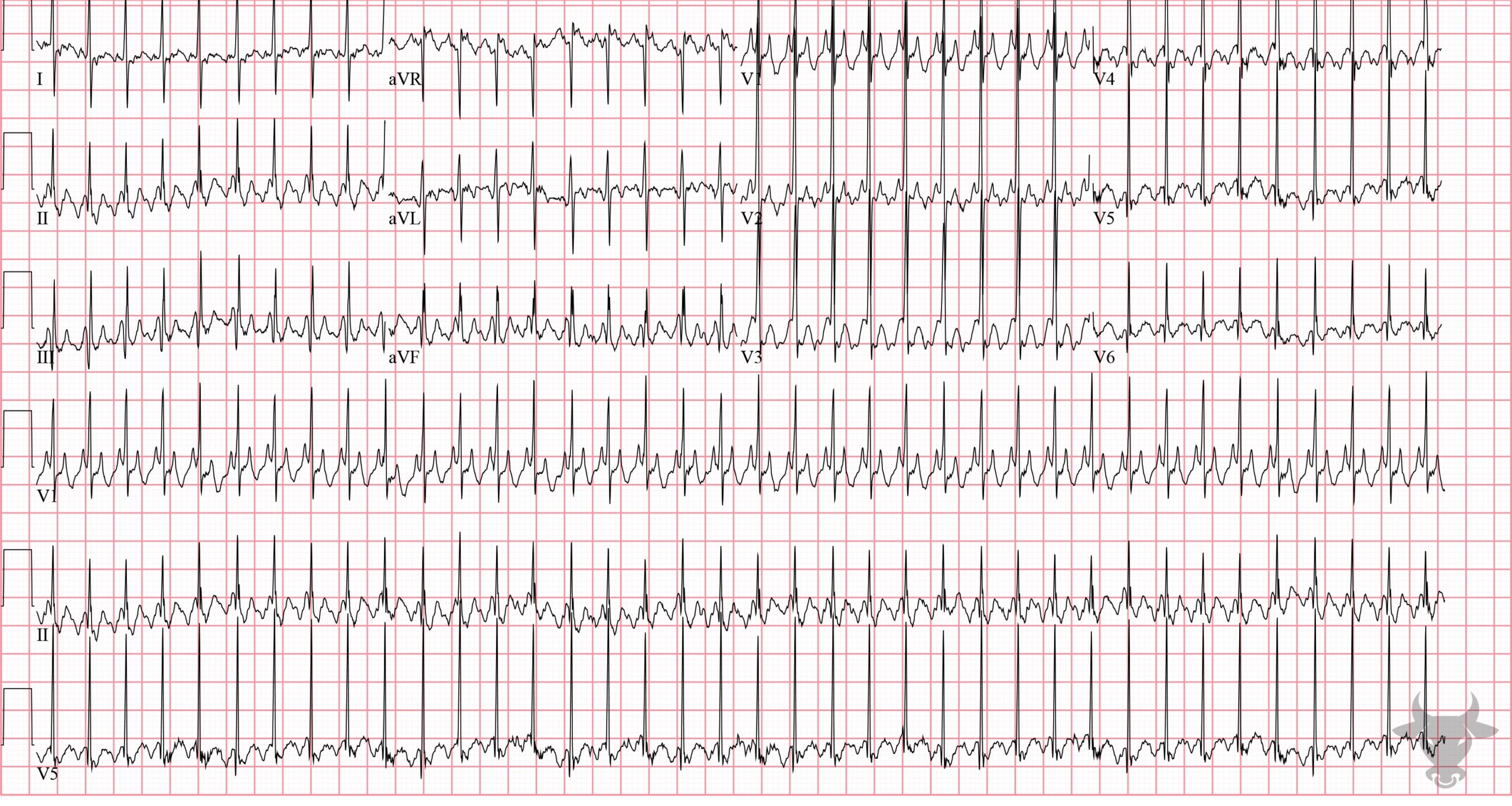
Atrial Flutter
2:1 atrial flutter in an infant.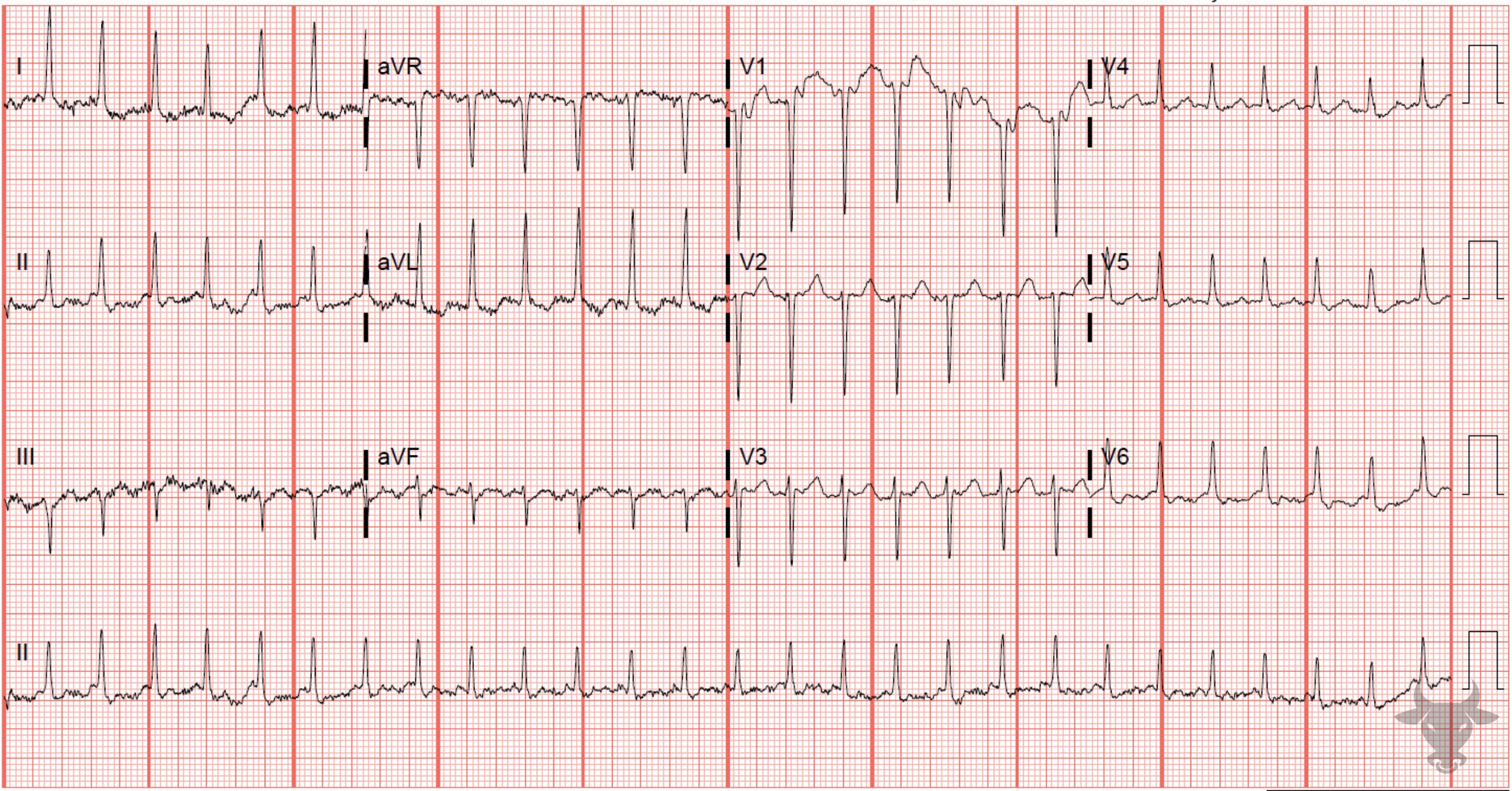
Atrial Flutter
Placement of the Lewis lead unmasked the underlying 2:1 conduction.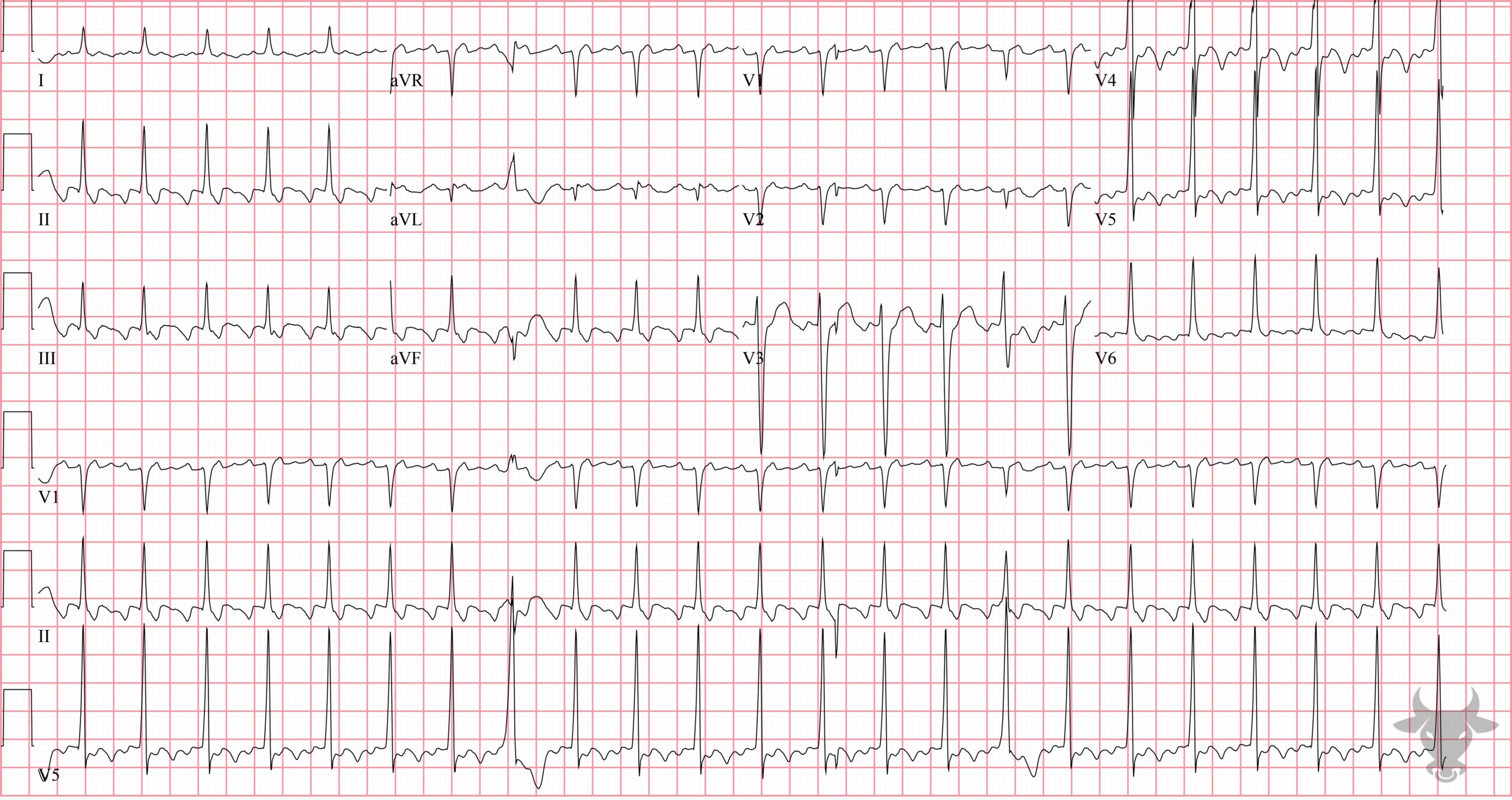
Atrial Flutter
Atrial flutter with 2:1 conduction. There is an atypical appearance to P waves in the limb leads (specifically II, III and aVF) where the expected isoelectric baseline is replaced by identical-appearing “sawtooth” waves. These atrial flutter waves occur at a rate of approximately 300 beats per minute, complemented by a ventricular rate of 150 beats per minute.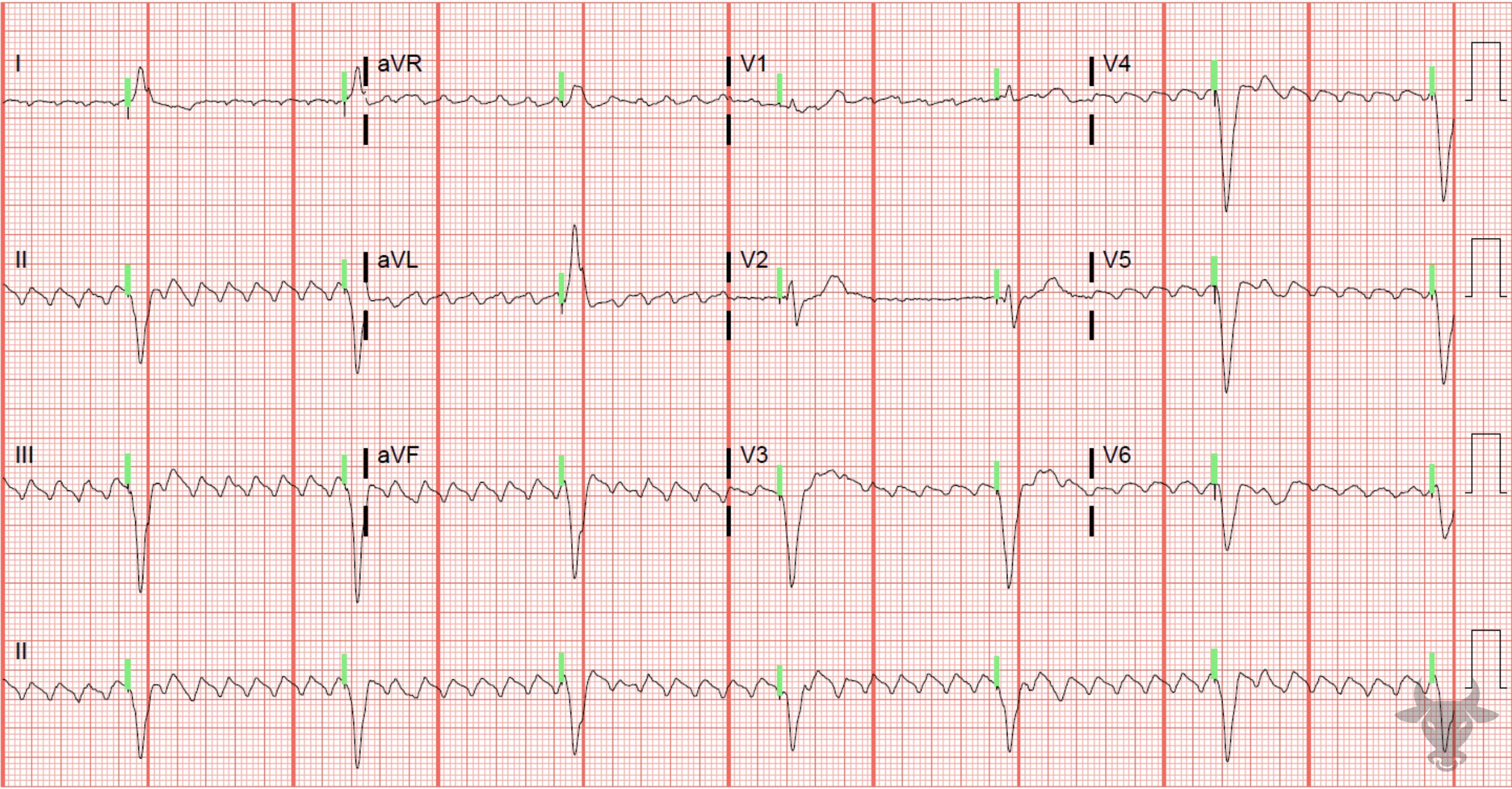
Atrial Flutter
Atrial flutter without native conduction but with paced ventricular activity. The pacemaker threshold was set to 40 beats per minute, and was later increased to 60 beats per minute.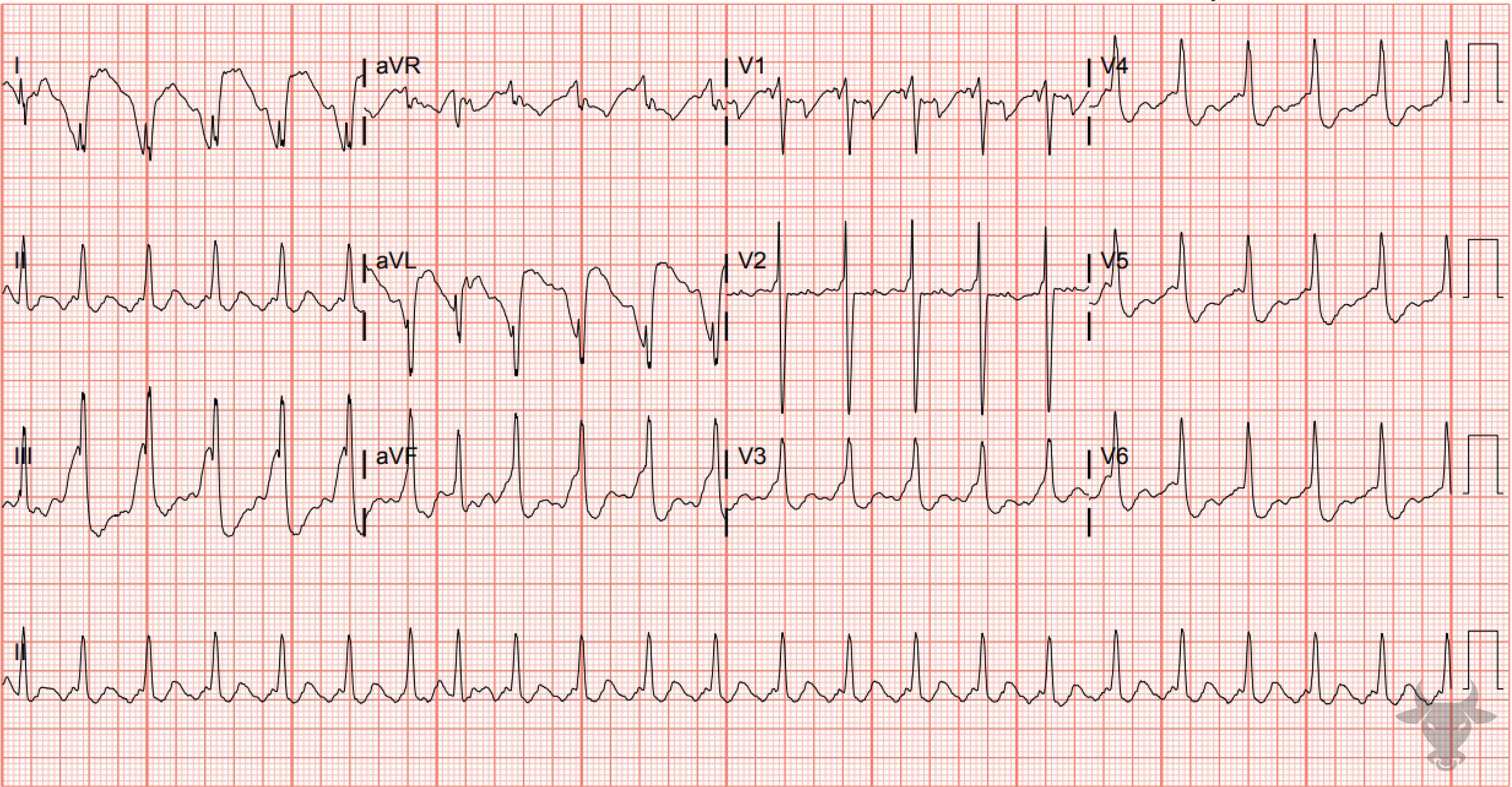
Sodium Channel Toxicity
Atrial flutter with 2:1 conduction. The wide and fragmented QRS, right axis deviation, and tall terminal R wave in aVR are all consistent with sodium channel toxicity; in this case, due to cocaine toxicity.References
- Link MS. Evaluation and Initial Treatment of Supraventricular Tachycardia. New England Journal of Medicine. 2012;367(15):1438-1448.
- Surawicz B, Knilans TK. Chou’s Electrocardiography in Clinical Practice. 6th ed. Elsevier; 2008.
